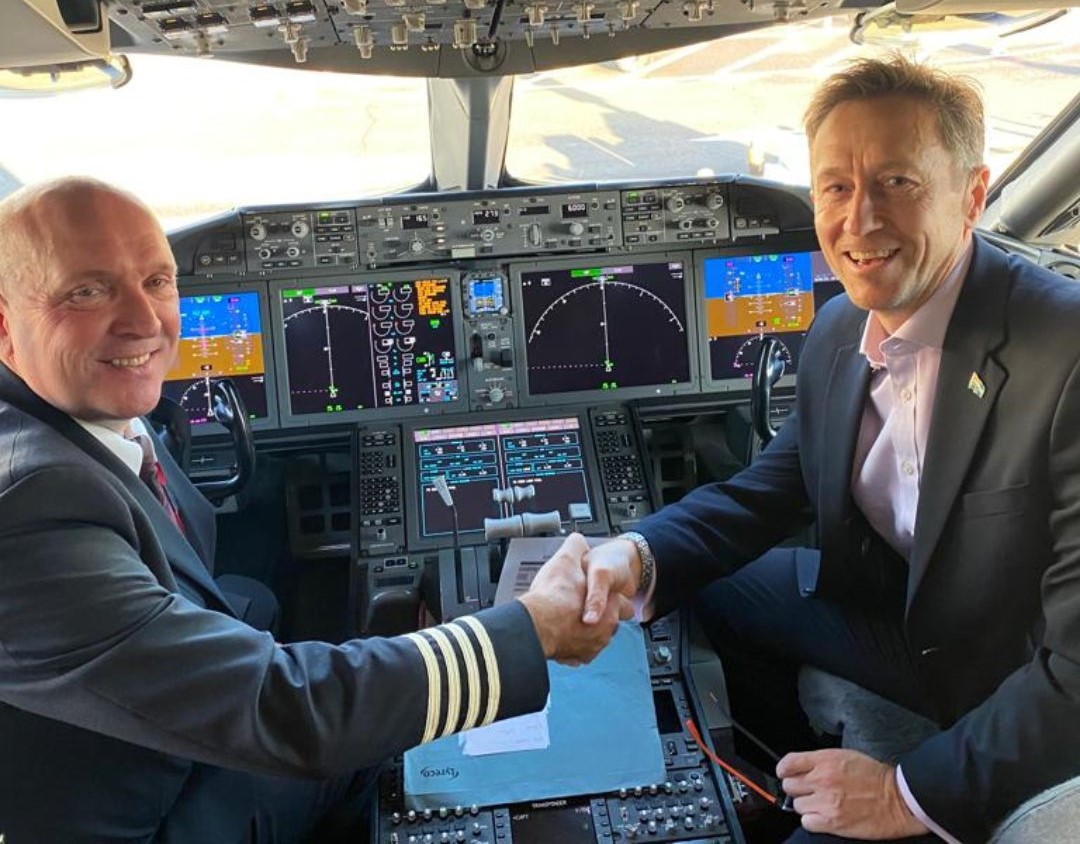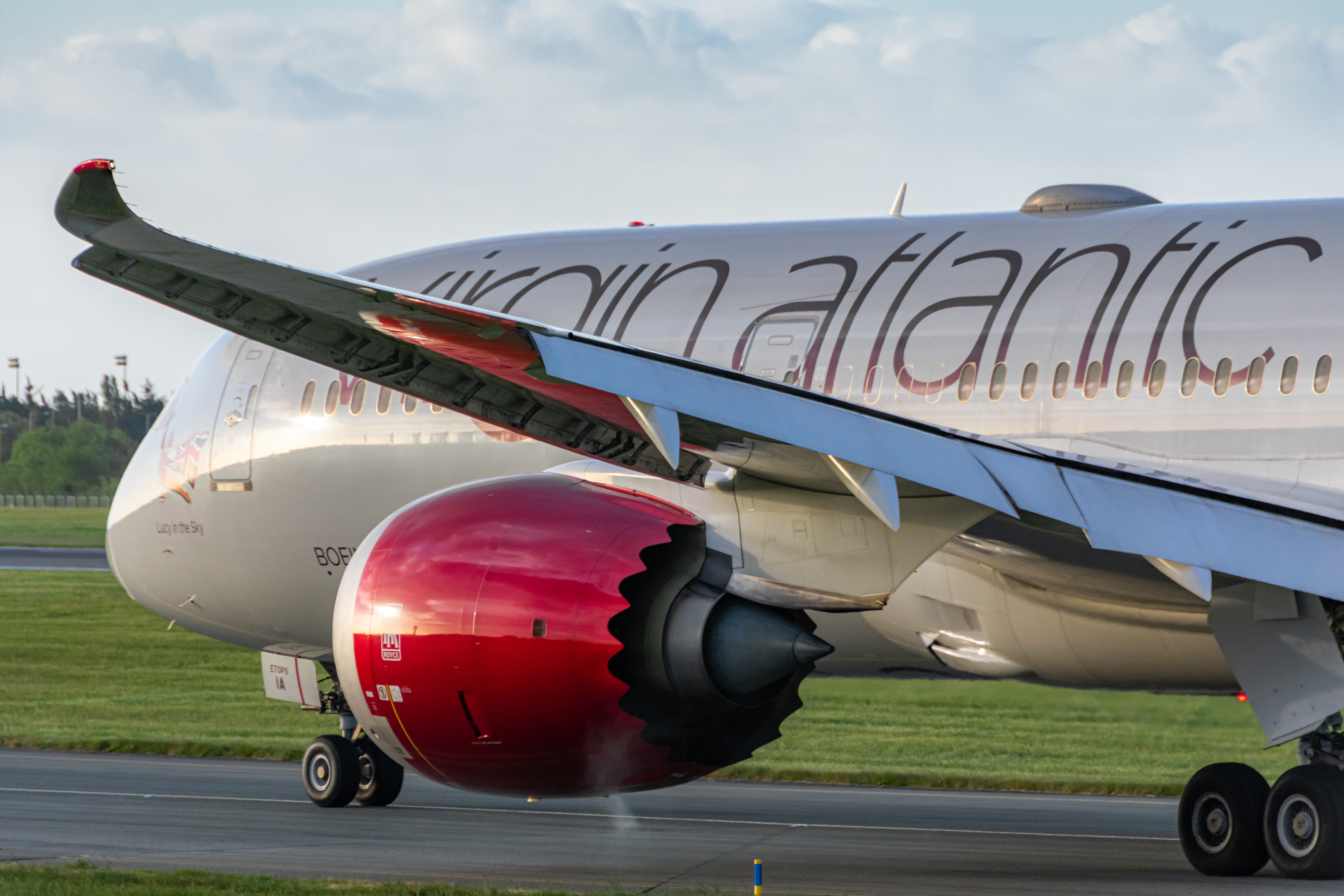28 November 2023 history was made.
Virgin Atlantic flew the CAA has issued Virgin Atlantic with a permit to fly a world-first transatlantic 100% Sustainable Aviation Fuel (SAF) flight representing the start of a greener age in aviation.
As the UK’s aviation and aerospace regulator, we enabled the flight to go ahead after extensive checks and authorisation – known as a Permit to Fly – alongside regulatory collaboration with the US Federal Aviation Administration.

The authorisation process
Our permit followed a programme of technical reviews, which analysed different aspects of the planned flight, including undertaking ground testing with Rolls Royce on a Trent 1000 engine running on 100 per cent SAF.
Working to get permission, a team comprised of Virgin Atlantic, Rolls Royce, Boeing, Air BP, Virent, and a range of research and academic institutes worked to establish a safety case for the flight, which also demonstrated the reduced CO2 output of the SAF fuel used.
The airframe and engines were already fully certified, with a safety track record of thousands of flying hours – but the aircraft type certificate was not valid when used with 100 per cent synthetic fuel.
This was one of the main reasons why Virgin Atlantic needed to obtain a Permit to Fly prior to take off and present to us a safety case. We considered this extensively to determine the safety of the flight, which covered the safety of the fuel itself, ensuring it would not cause any issues with the engines.
SAF fuel safety testing
Fuels are not ordinarily certified by aviation authorities, as they are held to a global standard of jet fuel known as Jet A/A1.
Instead, the compatibility of aircraft and engines with a jet fuel was established by the Civil Aviation Authority during the certification of the aircraft or engine of a craft.
The SAF fuel was measured against acceptable existing fuel standards, set by the ASTM (formerly American Society for Testing and Materials) and UK Defence Standardisation, which is part of the UK Ministry of Defence.
Air BP, Rolls Royce, Boeing, and an independent fuel test laboratory also conducted detailed tests on the proposed fuel blend to support the safety case. In addition, the team demonstrated the fuel’s compatibility via a series of back-to-back engine and auxiliary power unit (APU) rig tests, which showed there was no difference in terms of performance, handling, or fuel consumption compared to standard aviation fuel.
We also conducted a safety analysis of the flight, validating the safety risk assessment to show the SAF fuel was “fit for use” and that a safe demonstration flight could be conducted.

The future
100 per cent SAF flights are not yet approved for general commercial operation – but we’re hopeful this will soon change.
Authorising this flight is just another example of how we’re enabling innovation to be introduced safely and sustainably. It also supports g the government’s Jet Zero strategy, in addition to other initiatives such as enabling the research of hydrogen as a fuel through our Hydrogen Challenge.
The SAF fuel used in this flight was produced using sustainable feedstocks and processing pathways. This is why SAF reduces carbon emissions from the lifecycle of the fuel by up to 80 per cent compared to other jet fuel sources, which means its conventional use would allow incredible strides in the reduction of emissions.
It is also vital that the aircraft did not need any modifications to allow the fuel to be used, meaning 100 per cent SAF can be used as a safe replacement and alternative to traditional fossil aviation fuels without expending additional energy to make modifications to aircraft.
The Department for Transport, Virgin Atlantic and their partners are now assessing the data to determine the net CO2 impact of the flight.
This flight was a landmark event in the hoped and expected shift of aviation to a new greener age and should help encourage the wider production and use of SAF in future flights to come.



Leave a comment
Fields marked with an asterisk (*) are required.